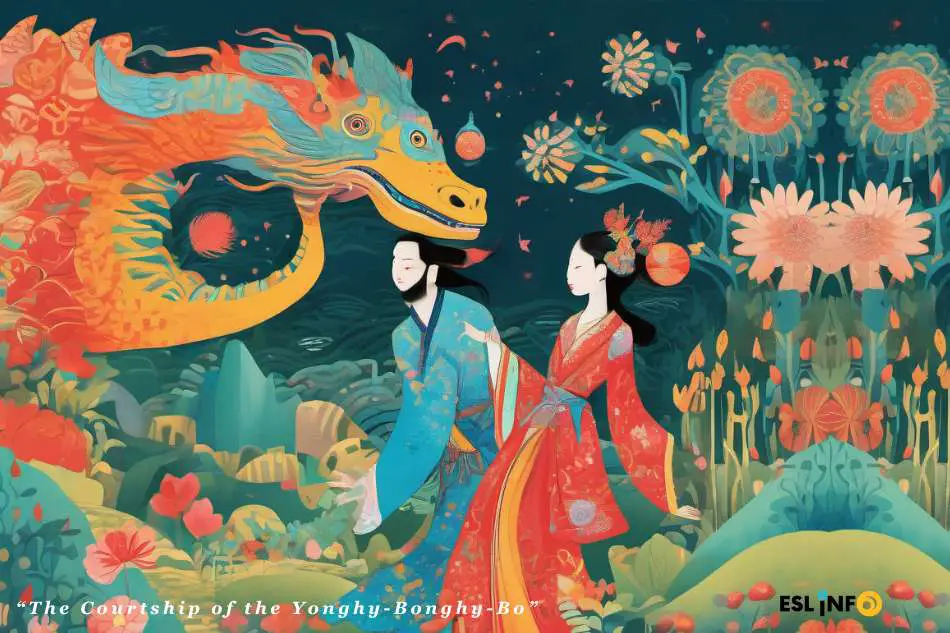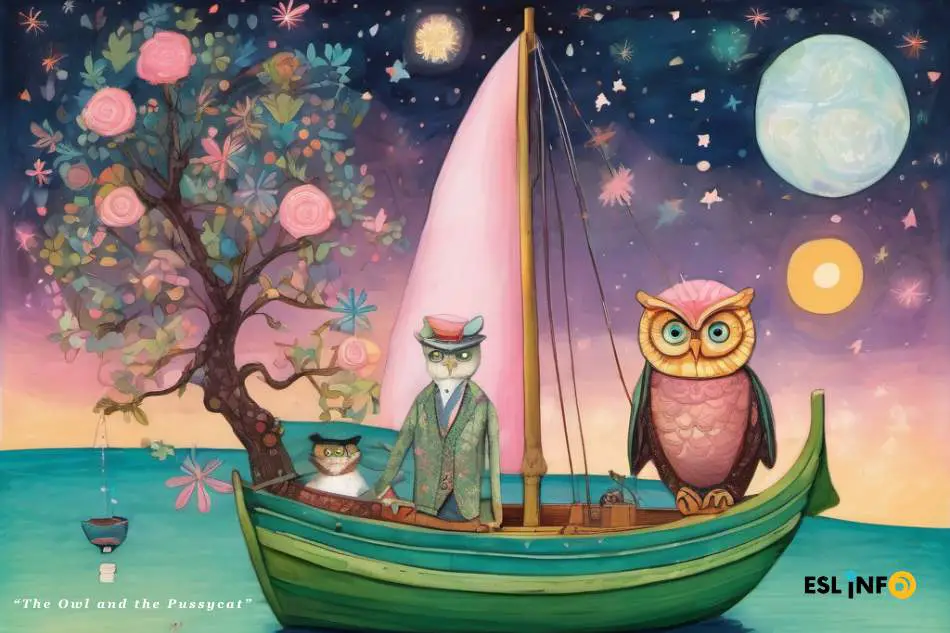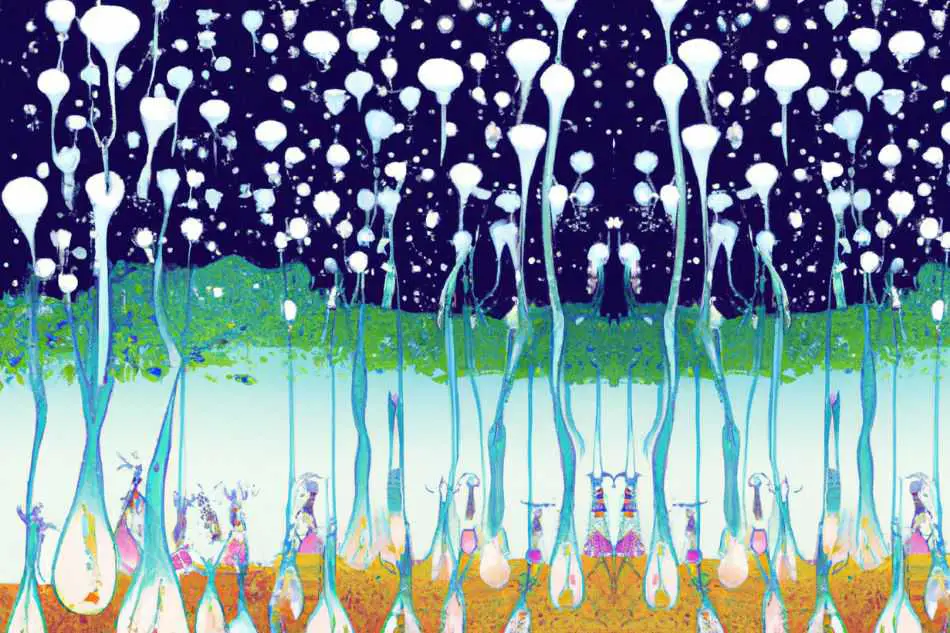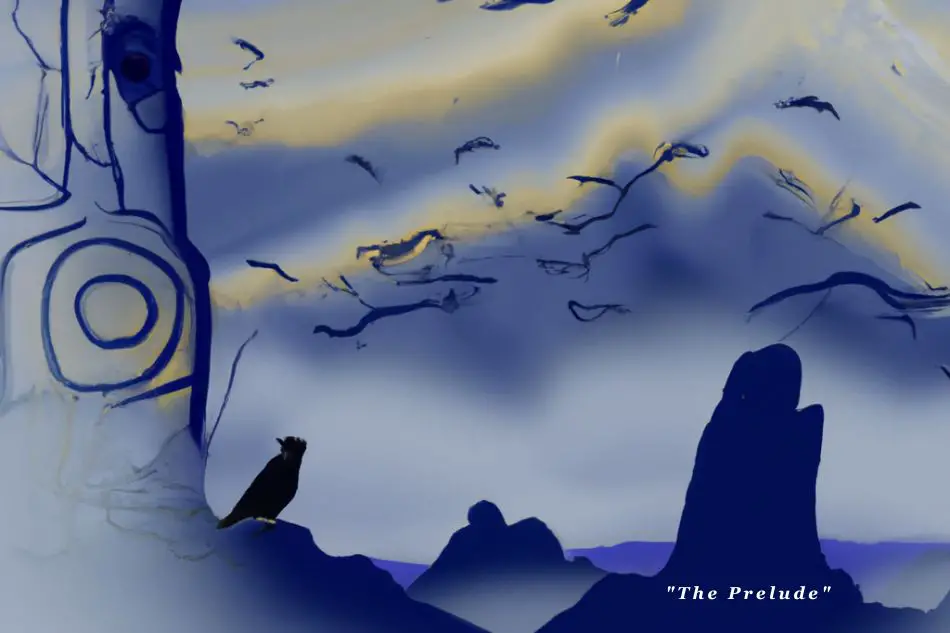“The Rime of the Ancient Mariner” by Samuel Taylor Coleridge is a classic poem that explores themes of guilt, redemption, and the supernatural. The poem tells the tale of a mariner who is cursed after killing an albatross, and his subsequent journey to find redemption.
Coleridge’s use of vivid imagery, symbolism, and supernatural elements creates a haunting and atmospheric narrative. The poem’s exploration of the human experience and the consequences of our actions continues to resonate with readers today.
“The Rime of the Ancient Mariner” remains a timeless piece of literature that has captivated audiences with its powerful storytelling and thought-provoking themes.
This critical appreciation unpacks the ins and outs of this beautiful ballad, a key to understanding the the romantic movement of Coleridge’s time.
Table of Contents
The Life And Work Of Samuel Taylor Coleridge
Samuel Taylor Coleridge was a prominent English poet, literary critic, philosopher, and theologian. He was a key figure of the Romantic movement and is best known for his visionary poetry. Let’s delve into his early life and influences, as well as his major literary contributions.
Early Life And Influences
Coleridge was born in 1772 in Devon, England. His father, a vicar, passed away when he was just a young boy. This early loss was a significant influence on Coleridge’s emotional and intellectual development.
He attended Christ’s Hospital school in London where he was introduced to the works of William Shakespeare and other influential writers, igniting his passion for literature and poetry.
Major Literary Contributions
Coleridge made several major contributions to English literature. He is best known for his poetry, particularly his lyrical ballads. His masterpiece, “The Rime of the Ancient Mariner,” is a prime example of his exceptional storytelling and imaginative language.
The poem, filled with supernatural elements and moral undertones, has captivated readers for centuries.
In addition to his poetry, Coleridge was a prolific literary critic and philosopher. His critical works, such as “Biographia Literaria,” have had a profound impact on the field of literary criticism and continue to be studied and revered by scholars to this day.
Also Read: Critical Appreciation of Kubla Khan by S. T. Coleridge
Overview Of “the Rime Of The Ancient Mariner”

Samuel Taylor Coleridge’s “The Rime of the Ancient Mariner” is a celebrated narrative poem that delves into profound themes and motifs while intricately weaving a captivating tale of supernatural encounters and moral redemption.
This overview will provide a brief exploration of the plot summary, as well as an analysis of the literary themes and motifs that permeate this timeless work.
Plot Summary
The poem opens with a harrowing description of the Mariner’s experiences at sea, where he and his crew find themselves stranded in the midst of an otherworldly, icy landscape.
As the Mariner regales his tale, it becomes evident that his journey is fraught with the supernatural, including encounters with a ghostly ship, ethereal apparitions, and a profound transformation that reverberates through the narrative.
Literary Themes And Motifs
Coleridge’s work encompasses a myriad of literary themes and motifs that resonate with readers on a profound level.
The themes of guilt, redemption, and the natural world are interwoven throughout the poem, as the Mariner grapples with the consequences of his actions and seeks solace in the elemental forces of nature.
Style And Language In “the Rime Of The Ancient Mariner”
Use Of Symbolism And Allegory
In “The Rime of the Ancient Mariner,” Samuel Taylor Coleridge skillfully utilizes symbolism and allegory to convey deeper meanings and themes. The poem is rich with symbolic elements such as the albatross, which represents both the burden of guilt and the interconnectedness of all living beings.
Through allegorical devices, Coleridge delves into profound philosophical concepts, inviting readers to ponder the complexities of human existence and morality.
Exploration Of Supernatural Elements
Coleridge’s masterful exploration of supernatural elements in “The Rime of the Ancient Mariner” adds an eerie and mystical quality to the narrative. The poem vividly portrays encounters with spectral figures, eerie omens, and otherworldly phenomena, creating an atmosphere of both terror and fascination.
By intertwining the natural and supernatural realms, Coleridge crafts a haunting tale that captivates and mesmerizes readers, blurring the boundaries between reality and the unknown.
Character Analysis In “the Rime Of The Ancient Mariner”
Samuel Taylor Coleridge’s “The Rime of the Ancient Mariner” presents an intricate web of characters whose roles and interactions contribute to the poem’s dynamic narrative. The character analysis in this timeless piece of literature delves into the transformation of the Mariner and the impact of supporting characters, unraveling the profound layers of symbolism and moral allegory within the poem.
The Mariner’s Transformation
The central character, the Ancient Mariner, undergoes a compelling transformation throughout the poem, marked by guilt, redemption, and spiritual awakening. Initially depicted as a reckless and remorseless seafarer, the Mariner experiences a profound shift in consciousness after committing the grave sin of shooting the albatross.
His journey unfolds as a testament to the human capacity for repentance and the ultimate quest for redemption. As the narrative progresses, the Mariner’s harrowing experiences at sea lead to a profound internal metamorphosis, culminating in a heightened sense of responsibility and awareness of the interconnectedness of all living beings.
The Mariner’s transformation encapsulates the poem’s overarching themes of sin, penance, and spiritual enlightenment, leaving an indelible mark on the reader’s psyche.
Impact Of Supporting Characters
Aside from the Mariner, the poem introduces an array of supporting characters, each playing a pivotal role in driving the narrative forward and contributing to the thematic tapestry of the work.
From the spectral figures of Life-in-Death and Death, whose malevolent influence haunts the Mariner, to the crew members whose fates are entwined with the Mariner’s cursed voyage, these characters serve as poignant embodiments of human frailty, mortality, and the lurking specter of divine retribution.
Through their interactions with the Mariner, these supporting characters underscore the poem’s exploration of human suffering, mortality, and the quest for absolution in the face of spiritual unrest.
Critical Reception Of “the Rime Of The Ancient Mariner”
The Critical Reception of “The Rime of the Ancient Mariner” has been marked by a rich history of initial reactions and ongoing scholarly interpretations.
Since its publication in 1798, Samuel Taylor Coleridge’s enigmatic poem has captured the imagination of readers and scholars alike, sparking diverse critical responses that have evolved over time.
Initial Reactions And Reviews
Upon its first publication as a part of the Lyrical Ballads, the reception of “The Rime of the Ancient Mariner” was mixed. While some critics praised Coleridge’s vivid narrative and imaginative storytelling, others found the supernatural elements and moral allegory perplexing.
However, it was the general public who embraced the poem, leading to its popular acclaim.
Ongoing Scholarly Interpretations
In the centuries that followed, “The Rime of the Ancient Mariner” has continued to captivate scholars and critics, yielding a multitude of interpretations. Its complex themes, including the natural world, spirituality, guilt, and redemption, have sparked ongoing scholarly debate and analysis.
Scholars have delved into the poem’s rich symbolism, contextualizing it within Coleridge’s larger body of work and the Romantic literary tradition.
Religious And Philosophical Interpretations
Themes Of Sin And Redemption
Samuel Taylor Coleridge’s “The Rime of the Ancient Mariner” delves into profound religious and philosophical interpretations, exploring themes of sin and redemption.
The poem delves into the consequences of sin, as the mariner faces the burden of his actions in the killing of the albatross. Through vivid imagery and symbolism, Coleridge portrays the weight of guilt and the journey towards redemption.
The transformation of the mariner from a sinner to a penitent soul showcases the profound exploration of these theological themes.
Exploration Of Existential Questions
The poem offers an in-depth exploration of existential questions, delving into the complexities of human existence and the consequences of one’s actions. Through the mariner’s harrowing tale, Coleridge prompts readers to contemplate the nature of human existence, moral accountability, and the pursuit of spiritual enlightenment.
The poem serves as a profound meditation on the human condition, compelling readers to ponder life’s ultimate purpose and the ramifications of individual choices within the larger cosmic framework.
Environmental And Ecological Interpretations
The Rime of the Ancient Mariner by Samuel Taylor Coleridge is a timeless piece of literature that has drawn numerous critical interpretations. One notable area of analysis is its Environmental and Ecological Interpretations, where the poem’s depiction of nature and the environment is closely examined.
This critical appreciation also sheds light on the deep symbolism and thematic relevance of environmental elements, such as the albatross and the sea, which play a significant role in conveying the poem’s ecological message.
Connection To Nature And The Environment
In “The Rime of the Ancient Mariner,” nature is not merely a backdrop, but an active and influential force. The connection to the environment is vividly portrayed through the vivid imagery and descriptions of the sea, the ice, and the creatures encountered by the mariners.
The poet’s meticulous attention to the natural world evokes a sense of reverence and wonder, emphasizing the intricate relationship between humans and their environment. This resonates with modern environmental discourse, highlighting the enduring relevance of Coleridge’s ecological insights.
Symbolism Of The Albatross And The Sea
The albatross, a central symbol in the poem, represents not only the beauty and mystery of the natural world but also the consequences of human actions on the environment. Its symbolism extends beyond the narrative to encompass themes of guilt, redemption, and the interconnectedness of all living beings.
The sea, on the other hand, serves as a powerful symbol of both life and death, vastness and isolation. It embodies the untamed forces of nature and reflects the ecological balance that humans must respect and protect.
Influence On Literature And Pop Culture
Samuel Taylor Coleridge’s iconic poem “The Rime of the Ancient Mariner” holds a significant place in literary history due to its profound influence on subsequent works and popular culture.
From inspiring adaptations in various forms of media to influencing renowned authors and artists, the poem’s impact continues to reverberate through time.
Literary Legacy
The enduring themes and symbolism in “The Rime of the Ancient Mariner” have left an indelible mark on literature. Coleridge’s masterpiece has influenced the works of esteemed writers such as Edgar Allan Poe, Herman Melville, and T.S. Eliot, who drew inspiration from the haunting narrative and vivid imagery.
The poem’s exploration of guilt, redemption, and the supernatural has resonated across generations, cementing its status as a literary touchstone.
Adaptations In Modern Media
The timeless allure of “The Rime of the Ancient Mariner” has also found expression in modern media through various adaptations. The poem has been reimagined in music, film, and visual arts, captivating audiences with its evocative storytelling.
Notable modern reinterpretations include Iron Maiden’s music composition and Gustave Doré’s haunting illustrations, reflecting the enduring relevance of Coleridge’s haunting tale in popular culture.
Coleridge’s Impact On Romanticism
The Rime of the Ancient Mariner by Samuel Taylor Coleridge stands as a seminal work that profoundly impacted the Romantic literary movement. Coleridge’s writings, including this iconic poem, were pivotal in shaping the aesthetic and thematic tenets of Romanticism.
A critical appreciation of The Rime of the Ancient Mariner unveils Coleridge’s significant influence on the broader Romantic literary movement, as well as his unique position within the pantheon of Romantic writers.
This essay also elucidates the impact of Coleridge on Romanticism, particularly through a comparison with other Romantic writers and his influence on the wider literary movement.
Comparison With Other Romantic Writers
Coleridge’s impact on Romanticism is discernible through a comparative analysis with other prominent Romantic writers such as William Wordsworth and Lord Byron.
While Wordsworth embraced nature as a source of spiritual inspiration, Coleridge’s mariner navigates a darker, supernatural world reflecting the inner struggles of the human conscience.
Similarly, Coleridge’s exploration of the supernatural in The Rime of the Ancient Mariner contrasts with Byron’s focus on personal heroism and the melancholic introspection evident in his works.
This comparison highlights Coleridge’s unique contribution to Romantic literature, characterized by his spiritual and metaphysical preoccupations.
Influence On The Wider Romantic Literary Movement
Coleridge’s impact extended beyond his individual works to shape the wider Romantic literary movement. His poetic narrative of the mariner’s moral redemption and the portrayal of an eerie, nautical setting inspired subsequent writers to explore themes of guilt, redemption, and the sublime in nature.
Furthermore, Coleridge’s mastery of language and the supernatural elements in his poem set a precedent for other Romantic writers to fuse the inexplicable with human experience, elevating the genre of Romantic literature to new heights of emotional intensity and psychological insight.
Frequently Asked Questions
1. What Is The Critical Summary Of Rime Of The Ancient Mariner?
The critical summary of Rime of the Ancient Mariner is about a sailor who faces supernatural consequences for killing an albatross. The poem explores themes of guilt, punishment, and redemption, weaving in supernatural elements. It emphasizes the interconnectedness of all living things and the power of storytelling.
2. What Is The Message Of Coleridge’s Rime Of The Ancient Mariner?
The message of Coleridge’s Rime of the Ancient Mariner emphasizes the consequences of violating natural laws. It explores themes of guilt, redemption, and the interconnectedness of all living things. The poem serves as a cautionary tale against environmental destruction and the need to respect the balance of nature.
3. What Is The Main Idea Of The Rime Of The Ancient Mariner?
The main idea of The Rime of the Ancient Mariner is the consequences of violating nature’s balance. The poem explores themes of guilt, redemption, and the interconnectedness of all living things.
4. How Does The Rime Of The Ancient Mariner Teach Readers To Appreciate Nature?
The Rime of the Ancient Mariner teaches readers to appreciate nature through its vivid descriptions and the mariner’s transformation after realizing the interconnectedness of all living things. The poem emphasizes the beauty and power of nature, encouraging readers to cherish and respect it.
5. What Is The Theme Of “the Rime Of The Ancient Mariner”?
The main theme of the poem explores the consequences of the Mariner’s actions.
Conclusion
The Rime of the Ancient Mariner is a timeless classic that captivates readers with its compelling themes and vivid imagery. Samuel Taylor Coleridge’s masterful use of symbolism and narrative structure leaves a lasting impression on literary enthusiasts.
The poem’s exploration of guilt, redemption, and the supernatural continues to resonate with audiences, solidifying its place in the canon of English literature.










You must be logged in to post a comment.